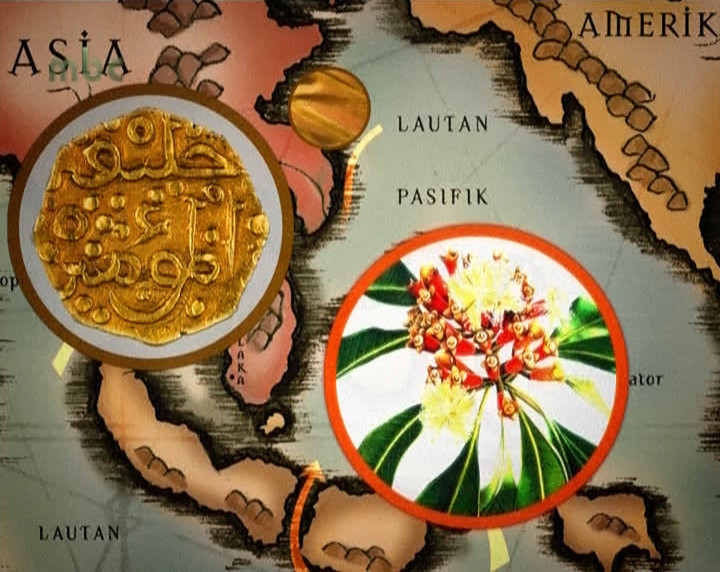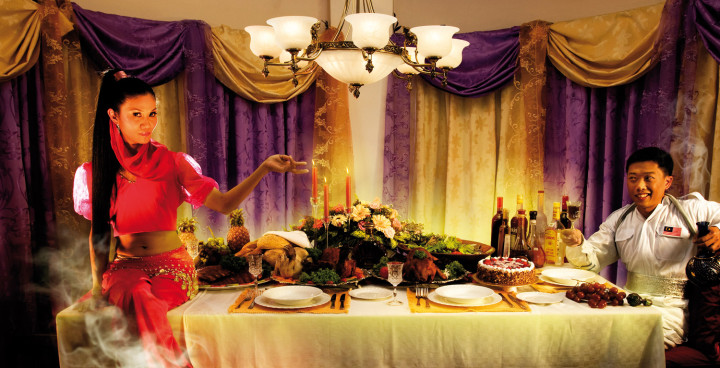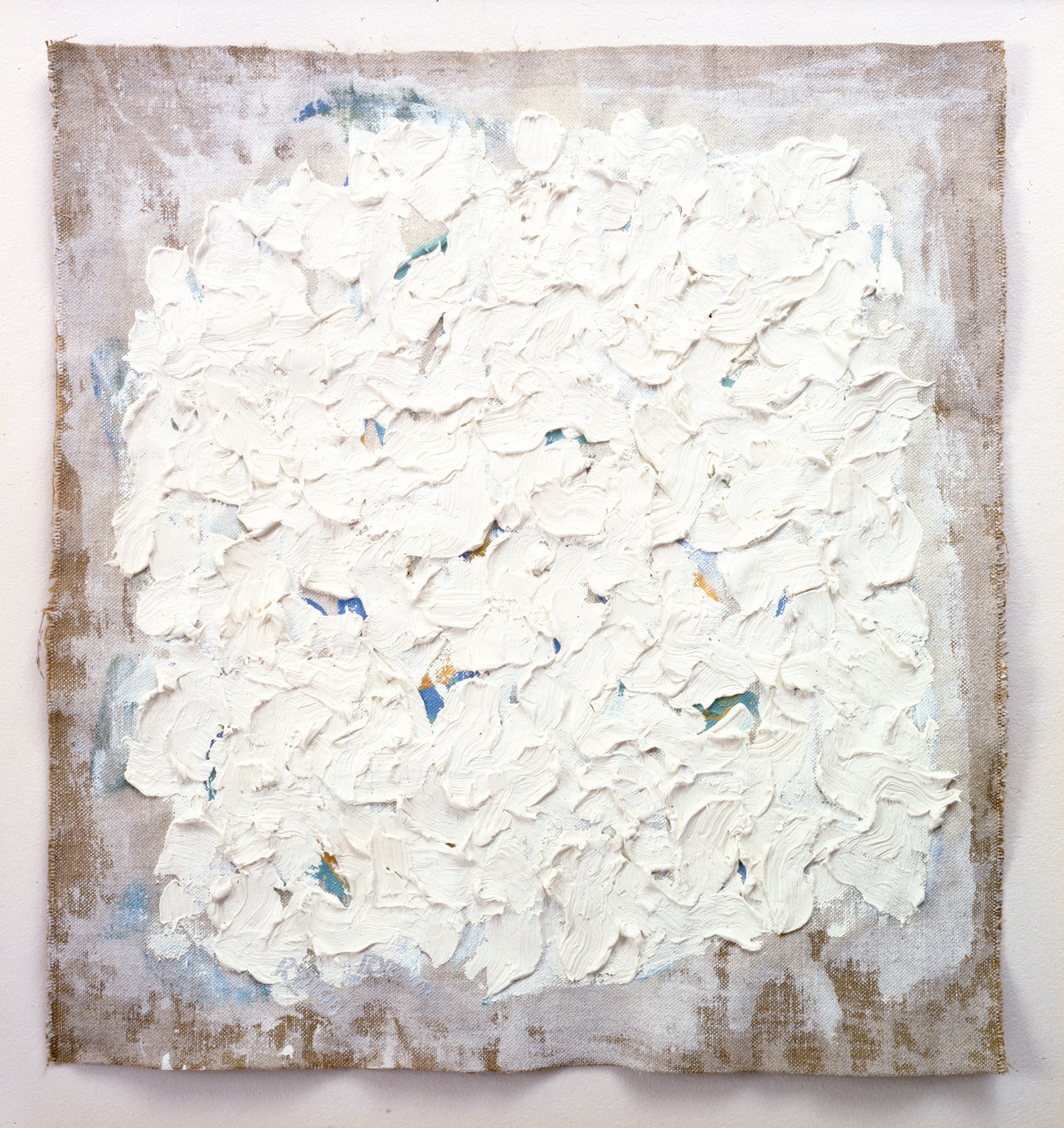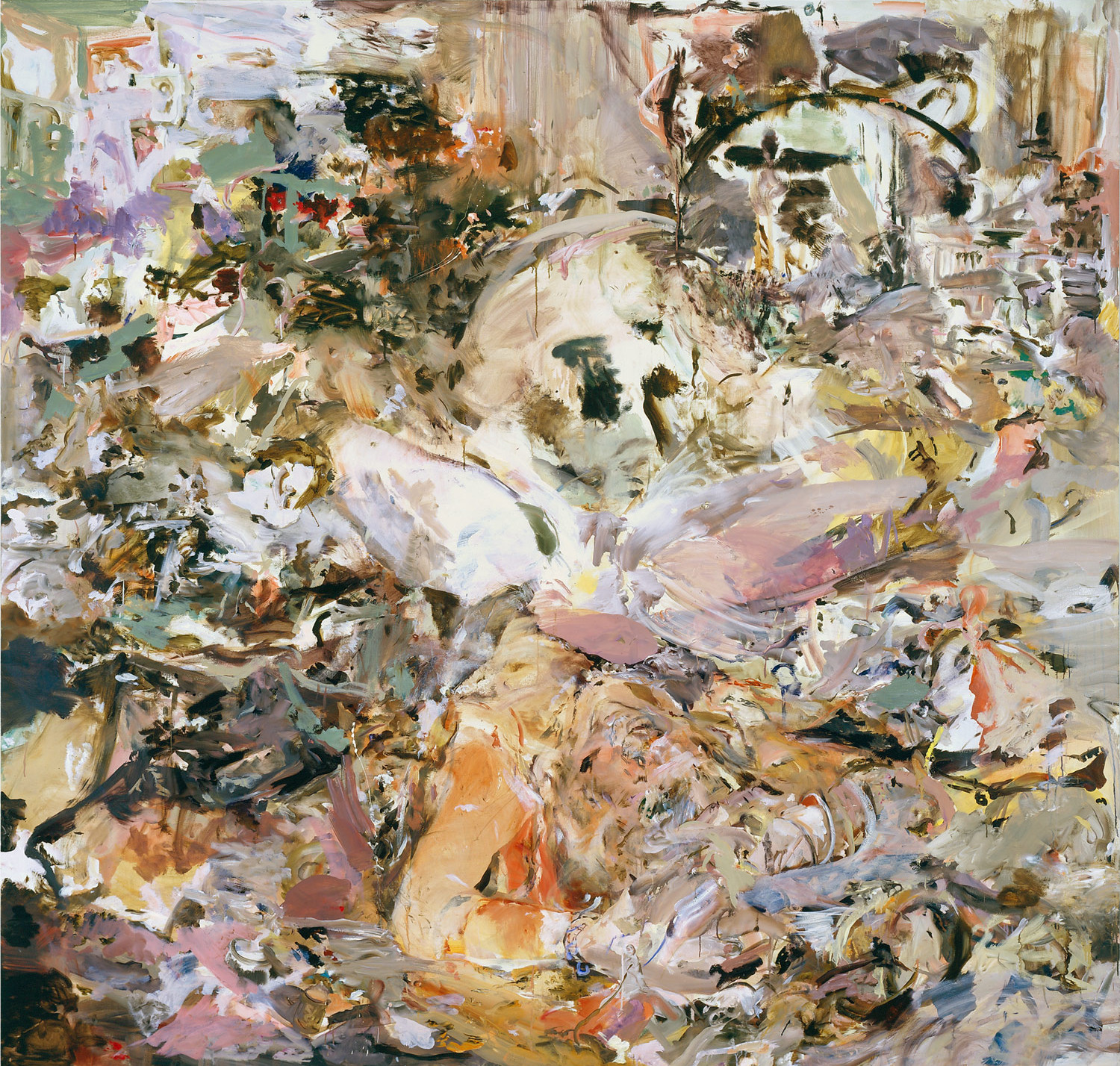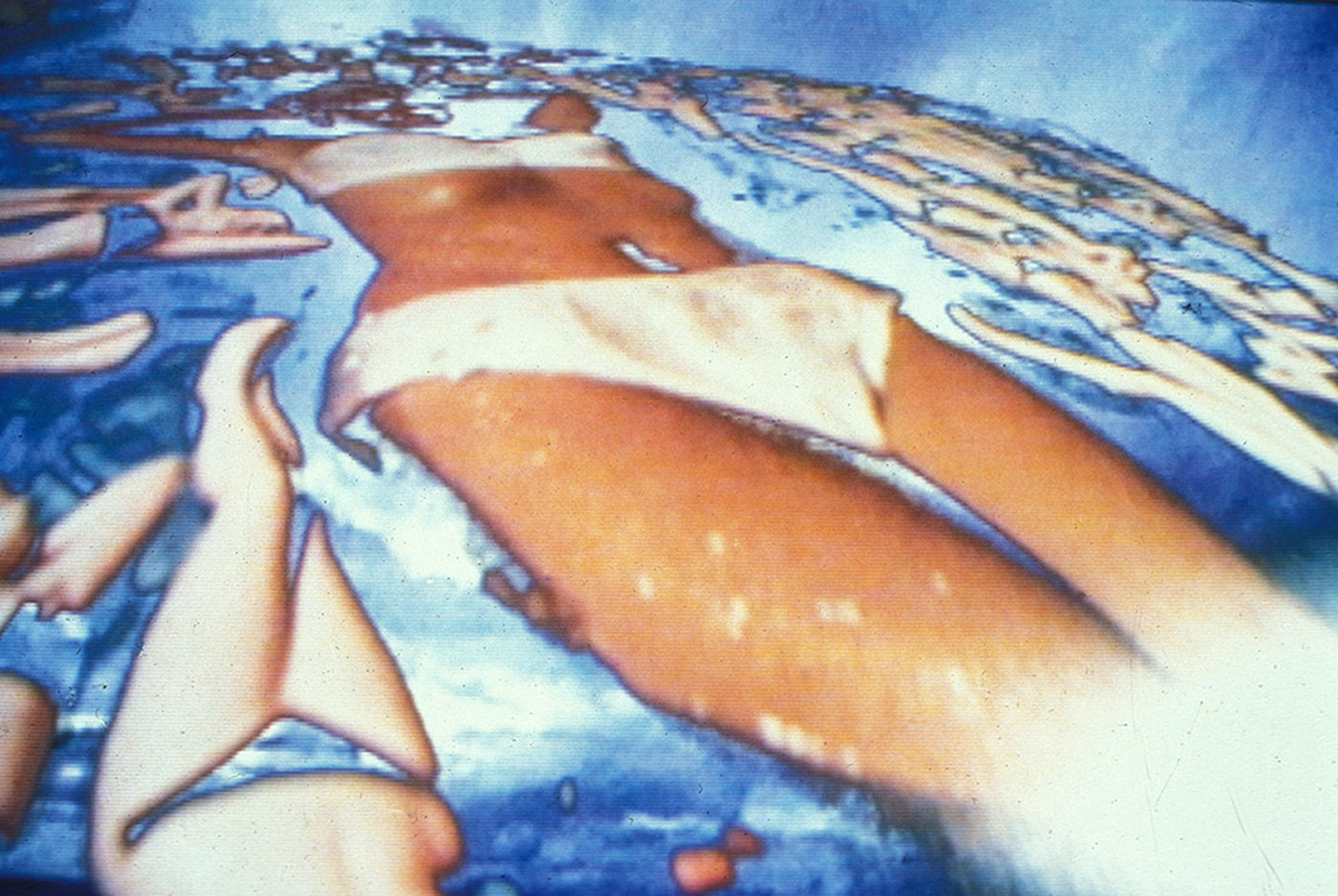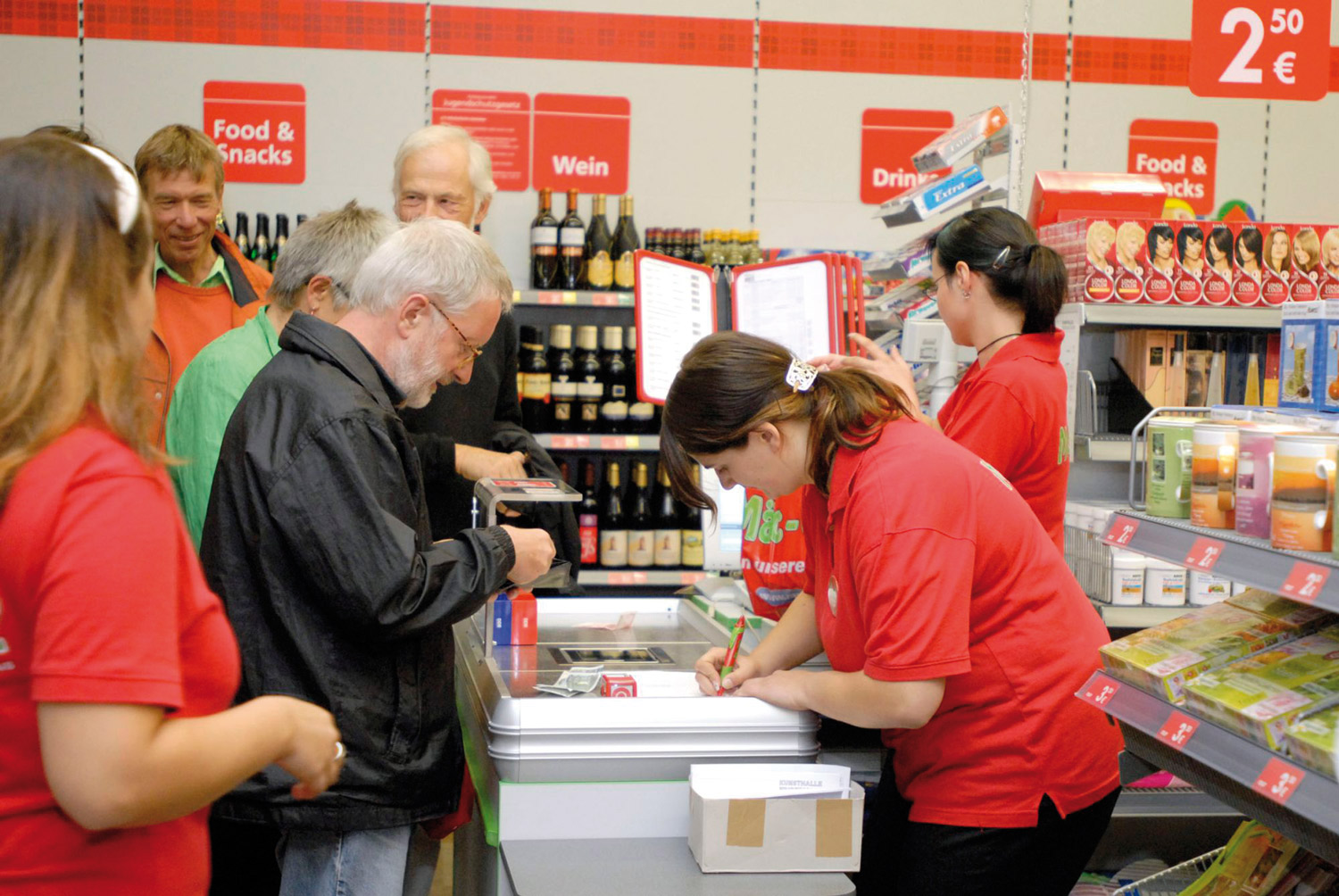
Hou Hanru: When did you start thinking about Re:Looking (2002-03)? Was it for the Venice Biennale? Or was it because you were in Austria at that time?
Wong Hoy Cheong: Because of Austria. I was commissioned to do a project with Schauspielhaus, a theater company in Vienna. The project was broadly based on re-evaluating Marco Polo and his travels. I was wondering if, instead of him traveling from West to East, what if an explorer traveled from East to West instead, and if this person went to Austria, what would he have seen, what would he have felt?
And I extrapolated this idea further. What if he not only went there like an explorer, but instead, ended up colonizing the place. So that’s how this video, a sort of mock documentary, evolved.
HH: After I saw your video and invited you for the 50th Venice Biennale, we discussed the possibility of developing the idea beyond a video projection or a TV documentary. I was at that time conceiving the whole exhibition as an urban space with different types of public and private spaces: houses, squares, streets, exteriors and interiors. I guess we discussed the idea of a TV documentary within a more familiar setting — a living room.
What was interesting in this project was not only the story of traveling between East and West, but also the story of a fictional reversal of colonization. But what interested me was that it happened on a personal and individual family level. A private level. There wasn’t any kind of political confrontation.
WHC: Yes, it was mainly about people talking about their experiences. Overt political references often become didactic and end up being mere propaganda. And perhaps even end up not saying very much.
HH: Having lived in France for so many years, and having worked on issues of colonial history, migration and cultural identity, I felt that all these issues appeared in Re:Looking. It was fascinating and maybe it was the first time I saw a work that dealt with these issues but with a reversed interpretation of history. At certain points one might even be pleased that it represented an impossible revenge and fantasy. It confronts our psychological expectations. What made you decide on this fiction of reversed colonization?
WHC: This idea was partly influenced by the aftermath of 9/11. I think around that period there was a lot of manipulated and faked information. Even within so-called authoritative sources — news, documentaries, and official government reports. That information can be faked so easily nowadays. I wanted to create that slipperiness between fact and fiction. So the video, as well as the living room and TV station website, constantly played with the merging of factual and fictional histories. And when you start doing that, you end up not knowing what is real anymore, what to trust anymore. I think that’s very much the ethos we are living in now, especially people’s disillusionment with politicians and the political process.
WHC: Yes. I think I only used the past to reflect on the present. A large portion of the video dealt with, for example, Austrian migrant workers in Malaysia and their personal stories — how they adapted to life in a new country, dealt with racism, or being denied their rights and deported.
Migrant workers have become a major issue all over. Malaysia also has a large migrant worker population who have been abused and exploited. Also towards the end of the video, the individuals interviewed talk about how they hate Muslims, Turks and Malaysians, then statistics of electoral votes for Le Penn, Haider, Stoiber, etc. were flashed. So it became a reference to contemporary times. Did the colonization of Austrians force people to hate migrants? But in fact they were the Empire.
HH: Re:Looking was also shown in Austria. How did the people react to it?
WHC: The Austrian journalist Hans-Henning Scharsach, who played himself in the video, received threats and was called a traitor as he supposedly distorted the history of Austria. But I think people actually liked it, perversely liked the idea of being a victim. They had a sense of humor about it. It was quite the opposite in Malaysia. Official response from Malaysia saw it as inappropriate that I made fun of Austria. Also, Malaysia wasn’t a colonizer or aggressor. Instead we were victims of colonization.
HH: While issues of colonial and post-coloniality have been present in your work for a long time, it seems like you are shifting to something else. For example, Minaret (2005), the architectural intervention you realized during the 2nd Guangzhou Triennial, while still related to migration, history and religion, was more related to globalization as having a long history. As something not new.
WHC: Yes, there was already globalization before it became a popular discourse. But beyond globalization, like you said, there was indeed a shift in my work. This shift emerged in projects I did in the UK: Slight Shifts (2004) in Pitt Rivers Museum and Trigger (2004) for the Liverpool Biennial. They were developed soon after Re:Looking. In these works, I was rethinking the thrust of my work. In this time and day of globalization, with a flattening of experiences, I think provocations of the senses are needed. When I did Minaret, beyond trying to retrieve the history of trade, cultural exchange and globalization from over a thousand years ago, one of the crucial things was to use this minaret structure to stir the senses, evoke memories, rather than make a work just about history or globalization.
HH: Apart from this provocation, what was the content for you? Re-reading history? What about your choice of materials like scaffolding and netting? Or was it to create an illegal building?
WHC: I was particularly interested both in the illegal and in the incomplete. What fascinated me in Guangzhou was how the buildings in construction were wrapped up with construction netting. I have never seen this elsewhere. In Guangzhou, construction netting was sewn together, and often looked like a taut seamless skin over the incomplete building. And you don’t know what is actually inside this skin. Also construction workers work late at night, and these construction sites were lit up and looked amazing, especially when workers were welding and sparks were falling from the building like fireworks. Like a fantasy.
HH: Tell me more about your research process. In the beginning you really wanted to deal with attaching cameras to workers and machines going up and down, similar to Trigger; it was about the surprises and unexpected angles when looking at things. And then the project became more focused on the global and historical.
WHC: Even as I was developing the first idea of attaching cameras to construction workers, I was thinking about the possibility of building a minaret. When I first started the research there were a couple of things that struck me. One was the massive development and construction in Guangzhou. And since I came from a Muslim country, I was interested in the history of Islam and Arab traders. I instinctually wanted to build a tower, or work within an incomplete building, or use construction materials. And when I discovered that the oldest mosque in China was in Guangzhou, yes, this was what I wanted to do. Somehow the minaret idea came more naturally.

HH: How was the experience doing research in this mosque? It is a mosque still used by Muslims for worship, right?
WHC: Huaisheng Mosque is a functioning mosque, and quite open to outsiders. The imam (priest) there and ummah (muslim community) are more open. When I explained this project to the imam, he was very receptive to the idea, even though he could not officially approve or disapprove of the project. He suggested in an oblique way that in these times, anything artistic that beautifies the name of Islam should be encouraged. And because of that openness, I felt encouraged to do the project. To me, I needed the same sort of acknowledgement from the Muslim community in Guangzhou. But how did the public and art community in China respond to this minaret?
HH: I don’t think many people really understood the implications or significance of this project. They saw it as something funny. People are so used to Disneyland type of constructions these days. Everyone living in Guangzhou knows that there was a light tower by Pearl River in the past, but they had no idea that the light tower was actually a minaret of a mosque. And because the Guangdong Museum was situated in a very high-brow residential area, the residents became aware of this structure, and they were upset, called the city council, and wanted it demolished. So the council called the museum to demolish it. They saw it as invasive. Luckily, the museum managed to negotiate with the city council for a grace period of 3 months before they dismantled it, and by that time, the exhibition would have ended.
WHC: It is also funny that people who walked passed the scaffolding as we were constructing the minaret asked if the museum was undergoing construction or renovation.
HH: If this project happened 10 years ago, people would have still been aware of it. But now people have forgotten that China had such a close relationship with Islam. And they do not care, even if Muslims are the second biggest religious/ethnic group in China, especially in the North and West. But Chinese society is fundamentally pragmatic. All religious issues and problems are always secondary. The other funny thing is that the museum ended up having the minaret as the image of their New Year greeting card! Suddenly, this Islamic image became the emblem of the museum and of the New Year celebrations.
WHC: Even the work itself was surreal. Especially at night, when one traveled on the Pearl River, the minaret encapsulated this strangeness. You never knew if what you were seeing was real because the light made it translucent and glowing, like a hologram. But at the same time it also appeared structurally permanent. A bit like notions of religion.
HH: For the 10th Istanbul Biennial, you have done a unique project, almost activist in nature. Why such a project?
WHC: I guess as a kid growing up in Malaysia, and being exposed to western literature and popular culture, I had this stereotypical notion and fantasy about gypsies. When I was invited for the Istanbul Biennial, and found out that Istanbul has a sizeable Roma population, I thought I’d respond to this childhood fantasy. But the first time I visited the Roma community in Sulukule, a district in Istanbul, I was thrown into a meeting and discussion — it was with the Residents Association, NGOs, representatives from the UN, together with the Municipal Council who wanted to relocate the Roma, demolish their houses, and gentrify the district. I was thrown into a disturbing situation.

So I planned to do a documentary on the imminent demolition of Sulukule, but as I thought through this more it did not seem appropriate. I knew little about the community. I am an interloper. And making a video on this large issue with kids seemed disingenuous. Righteous in a way. So the project evolved.
I also wanted to continue exploring the idea of relinquishing control of the video camera to a third party, like in Trigger with horses, and in Suburbia (2006) with a wheelchair and remote control toy car. People say that the most difficult thing about film is working with animals, children and the weather. How would it be to leave cameras with children? I wanted to test this lack of control, since the community also seemed to have very little control over their lives and destiny at that point. It was about taking risks in a risky environment. About letting go of methodologies and planning.
HH: One very interesting evolution in your work is that it is becoming less and less didactic, and more open to the actual context and site-specificity. But still, there has been a consistency in how you look at things in different situations. Being site-specific and contextual is never something positive or negative. It is merely an approach to working.
But how do you feel about Istanbul? As a Muslim country, it is incredibly modernized and western in many ways. It is at the crossroads of Europe and Asia. How do you situate yourself in this context?
WHC: Istanbul is manic, complex and seems to survive well with contradictions. It reminds me a bit of my hometown, Georgetown — the architecture, the waters, the historical connections with other cities and cultures through trade. It is like I have seen this place before. There is a deep sense of history, but also of openness and a shared multicultural past. You feel connected to many aspects of history, culture and people — like in Georgetown, you can find within a square kilometer, mosques, Hindu, Taoist and Buddhist temples, Catholic and Anglican churches. But Turkey is at an advantage in its modernizing thrust. By keeping secularism and a lively parliament as its core, Turkey will probably do better in the long run in this globalizing world. Malaysia, unfortunately, is losing its sense of secularism, shared past, and becoming more and more conservative and racialized.
HH: Secularism in Turkey is much defended by the political and military powers. It was a project imposed by the elite when the republic was created. Similar to the creation of Malaysia. But the problem is that there is a gradual collapse of this utopian vision built by the elite of the Third World. As Vijay Prashad argued, there is an assassination of this utopian vision in the Third World. Now we are living in such times. Like in Turkey, you have a post-Islamist party in power, but at the same time it promotes political and economic liberalism and they try to make the society even more democratic than before. We are in a very pragmatic period of history.

